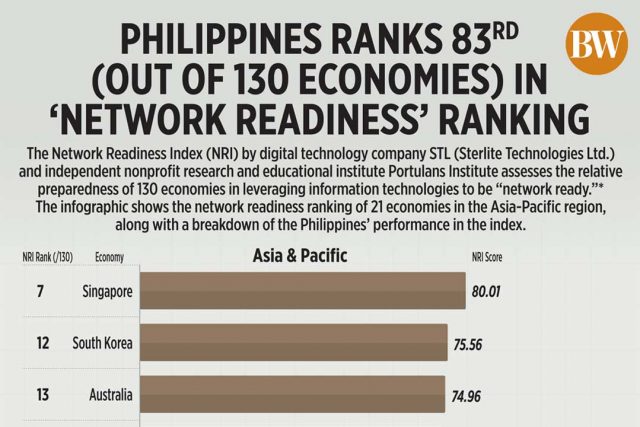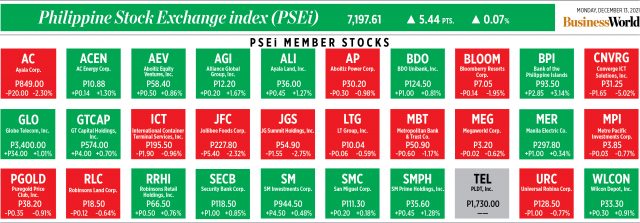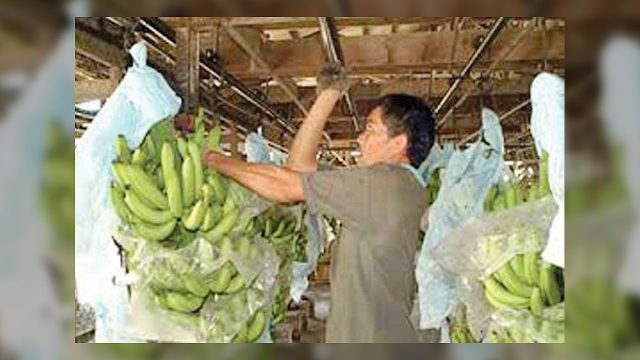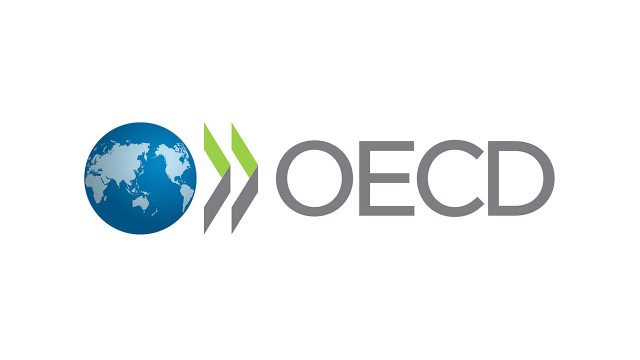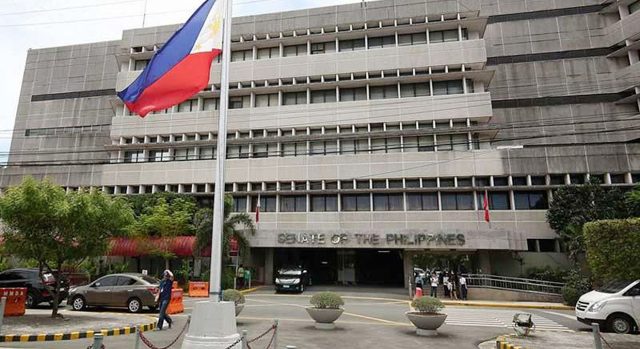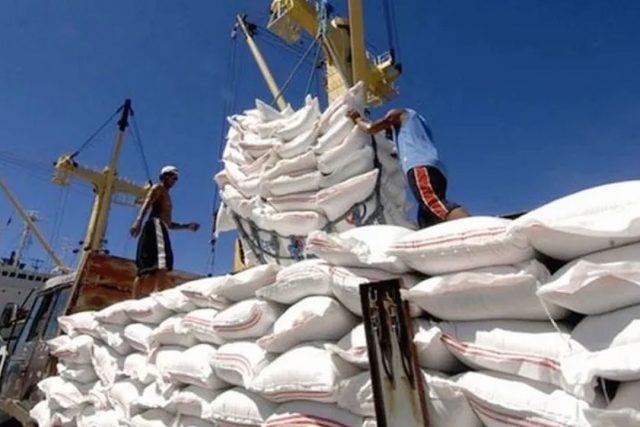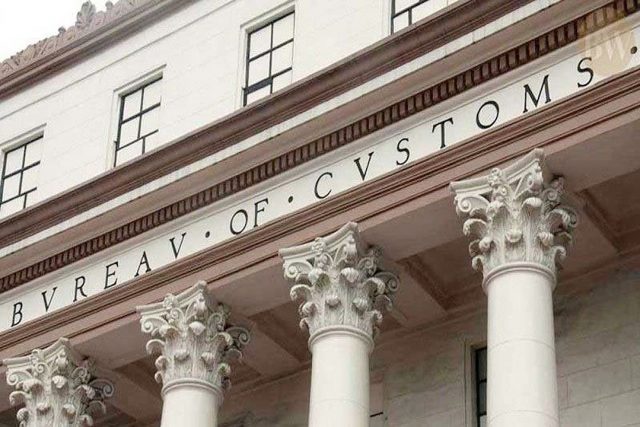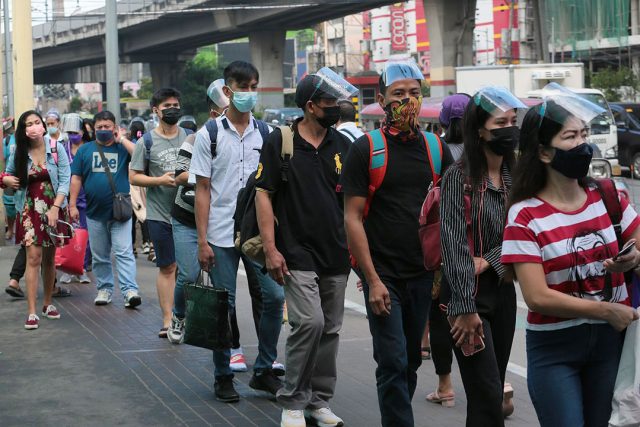Auto Sales
CAR AND TRUCK manufacturers reported their sales grew by double digits in November, allowing the industry to exceed last year’s total sales as demand picked up amid the further easing of lockdown restrictions. Read the full story.
Foreign chambers press Senate to finish work on PSA measure
THE Joint Foreign Chambers (JFC) pressed the Senate to pass a bill amending Commonwealth Act 146 or the Public Service Act (PSA), citing the need to safeguard the economic recovery.
In a statement on Monday, the foreign chambers said the bill can help maximize foreign investment that will create jobs, build infrastructure, and support the recovery.
They noted that the bill remains pending with the Senate at the plenary amendment stage, after having hurdled the House of Representatives in March 2020.
“By opening up key economic sectors, particularly telecommunications and transportation, and limiting the definition of public utilities largely to natural monopolies, the PSA amendments bill could maximize opportunities to attract new foreign investment that create jobs, build, infrastructure, and support economic recovery and growth as the country recovers from the effects of the pandemic,” they said.
“With less than 30 session days left before the end of the 18th Congress, the members of the JFC stressed that it is crucial the reform is passed, with its intended purpose intact, soon. Not to approve this bill will deny the recovering economy many billions of dollars,” they added.
The JFC also sought looser restrictions in foreign ownership of renewable energy, specifically solar, water, and wind.
“Current restrictions in government regulations are preventing billions of dollars from helping the country to shift faster to cleaner energy. These are kinetic forces of nature, the ownership of which is rarely claimed by countries,” they said.
Senate Committee on Public Services Chair Mary Grace Natividad S. Poe-Llamanzares said in a Viber message that every provision in the proposed amendments is still subject to alteration.
“Nothing in the bill is cast in stone as amendments and a vote on contentious provisions could be made while Congress continues deliberations. While we seek a law that will keep us in step with the times, we assure that safeguarding the interest of Filipinos will be the primordial consideration,” Ms. Poe- Llamanzares said.
“The bill has adequate safeguards to address questions on national security, reciprocity, labor and information security. Our people deserve quality services, affordable rates and opportunities for jobs to aid in our coronavirus disease 2019 (COVID-19) economic recovery,” she added.
The members of the JFC include the American Chamber of Commerce of the Philippines, the Australia-New Zealand Chamber of Commerce Philippines, the Canadian Chamber of Commerce of the Philippines, the European Chamber of Commerce of the Philippines, the Japanese Chamber of Commerce and Industry of the Philippines, the Korean Chamber of Commerce of the Philippines, and the Philippine Association of Multinational Companies Regional Headquarters, Inc. — Revin Mikhael D. Ochave
Agriculture trade deficit hits $2.4B in third quarter
AGRICULTURAL TRADE was in deficit by $2.4 billion in the third quarter, with imports of grain products worth over $900 million keeping the trade balance in the negative, the Philippine Statistics Authority said on Monday.
The deficit widened 18.3% from a year earlier, with the growth in imports (15.8% to $4.16 billion) outstripping that of exports (12.5% to $1.76 billion).
Total trade — the combination of export and imports— rose 14.8% year on year to $5.93 billion during the period, slowing from the second-quarter growth rate of 33.6%. A year earlier, the equivalent growth rate was 0.4%.
Agricultural imports accounted for 13.5% of the overall import bill in the period, with cereals representing the single largest category at $908.66 million.
Agricultural exports accounted for 8.9% of exports overall.
The top 10 export commodity groups were valued at $1.69 billion, or 96.1% of all export revenue.
The top exports were edible fruits and nuts and peel of citrus fruit and melons, which were valued at $471.71 million, or 26.8% of all farm exports.
Imports from the Association of Southeast Asian Nations (ASEAN) amounted to $1.37 billion, or 16.3% of all imports from ASEAN. Indonesia was the top source of farm goods with $401.21 million, or 29.3%. Vietnam followed with $326.95 million, and then Malaysia with $266.19 million.
The top commodities imported from ASEAN countries were animal or vegetable fats and oils and their cleavage products, prepared edible fats, and animal or vegetable waxes ($391.25 million), followed by cereals ($288.24 million), and miscellaneous edible preparations ($287.24 million).
Malaysia was the top destination within ASEAN of Philippine agricultural exports, accounting for $64.45 million. Thailand tallied $36.60 million, followed by Indonesia with $35.44 million. Agricultural exports accounted for 6.0% of total exports to ASEAN.
The top commodities exported to ASEAN were tobacco and manufactured tobacco substitutes ($58.63 million), animal or vegetable fats and oils and their cleavage products, prepared edible fats, and animal or vegetable waxes ($55.57 million), and miscellaneous edible preparations ($14.03 million).
The Netherlands was the top European market, accounting for $162.59 million worth of exports, while Spain was the leading source of agricultural imports, shipping $93.77 million. — Luisa Maria Jacinta C. Jocson
PHL signs on to OECD clean-energy financing program
THE Department of Energy (DoE) said on Monday that it has agreed to sign on to a program organized by the Organisation for Economic Co-operation and Development (OECD) to attract clean-energy investment.
The OECD program, known as the Clean Energy Finance and Investment Mobilisation (CEFIM) Program, will help the Philippines “address the green financing challenge, as well as jumpstart the energy transition goals of the Philippine Energy Plan (PEP),” the DoE said in a statement after Energy Secretary Alfonso G. Cusi expressed his support for the initiative.
The CEFIM program is funded by the government of Denmark and helps partner countries in Asia and Latin America draft policies to attract funding for clean-energy projects.
“The program will provide an opportunity for the Philippines to highlight efforts and challenges in promoting renewables and energy efficiency deployment,” the DoE said.
Under CEFIM, the Philippines is expected to develop a Clean Energy Finance and Investment Roadmap that will advance the Philippine Energy Plan (PEP) by providing the government and private sector a clear action plan for financing and investing in clean energy sector.
The DoE, the Bangko Sentral ng Pilipinas, and the Securities and Exchange Commission will also develop a Clean Energy Finance and Investment database to track funding for energy-related assets, and a finance training program to improve banks’ confidence in financing such projects.
The program will also enable the Philippines to share knowledge with Indonesia, Vietnam, Thailand and other neighbors that are already part of the program.
“As the country moves towards a climate-safe future, initiatives encouraging ‘green’ investments and financing, such as the CEFIM Program, will now be a critical component of the PEP, as well as the government’s post-pandemic programs,” the DoE added.
CEFIM is the energy component of another OECD program on Sustainable Infrastructure for the Paris Agreement, a German-funded initiative which boosts investment in sustainable infrastructure.
In April, the Philippines committed to reduce its carbon emissions by 75% by 2030. — Marielle C. Lucenio
Senate approves extension of 2021 budget validity on 3rd reading
THE SENATE passed on third and final reading on Monday a bill extending the validity of the 2021 budget until the end of next year.
House Bill 10373, which amends Section 62 of the General Provisions of Republic Act 11518 or the General Appropriations Act of Fiscal Year 2021 was unanimously adopted by the Senate with 22 votes in support.
Senator Juan Edgardo M. Angara, who chairs the Senate Finance committee, said the extension is crucial for the government’s recovery efforts since the pandemic is expected to persist throughout next year with the looming threat of the Omicron variant.
“The approval of the measure will allow the government to provide more social services and implement more projects for the benefit of more of our countrymen, and to a certain extent, provide some stimulus for jumpstarting our economic recovery,” Mr. Angara said in a statement on Monday.
Under the bill, appropriations authorized in the 2021 spending plan, including budgetary support to government-owned and -controlled corporations and financial assistance to local government units (LGUs), will be available for release and obligation until the end of December 2022, except for funds for personnel services.
On the other hand, appropriations for the statutory shares of LGUs will be available until fully utilized and disbursed.
The construction of infrastructure projects, the delivery of goods and services, inspection, and payment must also be settled before the end of December next year.
Once approved, 2.5 million more indigent patients are expected to benefit from government assistance, Mr. Angara said, as a significant portion of the budget for Medical Assistance for Indigent Patients has yet to be obligated.
It may also provide leeway for the Department of Interior and Local Government to use unobligated appropriations to hire up to 8,000 more contact tracers for one month, and boost the economic recovery by increasing infrastructure spending, he added.
After the end of the validity period, all unreleased appropriations and unobligated allotments will expire and revert to the unappropriated surplus of the general fund.
Except for LGUs, all balances of fund transfers between government agencies, instrumentalities, and departments not utilized, expended, or disbursed will also revert to the general fund.
The Budget department is authorized to issue the guidelines for the effective implementation of the cash budgeting system.
The Senate will now send its amended third reading report to the House of Representatives for adoption. — Alyssa Nicole O. Tan
Traders seen as main beneficiaries of food import liberalization
FARMERS and fishermen are not reaping the benefits of the liberalization in food imports, with much of the value captured by traders, participants in a food security forum said on Monday.
“Farmers’ losses are significant and far outweigh any gains of consumers,” National Manager Raul Q. Montemayor of the Federation of Free Farmers said in his virtual presentation. “Pro-import policy and consumer bias of government has exacerbated the problems of farmers.”
In the forum hosted by Tugon Kabuhayan, Mr. Montemayor said the rice tariffication law has largely benefited importers and traders while subjecting farmers to intense competition from imports, putting pressure on their earnings.
“There is no significant improvement in production volume, yield, cost of production, and competitiveness despite support from Rice Competitiveness Enhancement Fund (RCEF) and tariff proceeds,” he said, referring to some of the features of the law, which calls for rice imports to pay tariffs which then go towards funding programs that make domestic farmers more productive.
“We haven’t seen any significant changes since the law was passed. In the two years that the law came into effect, it resulted in a P56-billion loss for our farmers. This should have lowered the retail price and passed the savings on to the consumers. Instead, the importers and traders pocketed the difference,” Mr. Montemayor added.
The Philippine Statistics Authority estimates that 31.6% of farmers and 26.2% of fisherfolk are classified as poor. These percentages are equivalent to about 5.5 million farmers and 4.6 million fishermen.
Philippine Tilapia Stakeholders Association President Jon G. Juico said imports have affected fishermen as well.
“The tilapia farmgate price in Central Luzon is about P64-65, compared to P80-85 pesos last year. That’s why so many fishermen here in Central Luzon cannot compete and are driven further into debt,” Mr. Juico said. “We used to harvest twice a year, but now due to the pandemic we only harvest once a year. Tilapia is always abundant here in Central Luzon, but if this trend continues many fish farmers will stop producing.”
In October, 60,000 metric tons (MT) of galunggong (round scad) and mackerel were imported and sold in public markets. The government authorized the imports to ensure adequate supply during the three-month closed season and keep inflation in check.
Prudenciano U. Gordoncillo, a lecturer at the University of the Philippines Los Baños, said producers need to diversify in order to be more resilient against imports.
Mr. Gordoncillo added that the Philippines focuses too much on rice, and that farmers need to explore other crops.
“Corn used to be the primary source of carbohydrates in the Visayas and Mindanao, then it was replaced by rice,” he said. “But rice is harder and more expensive to produce than corn. Nutrition-wise, corn, cassava, gabi, and rice are the same. They are all carbohydrates. We shouldn’t just rely on one commodity.” — Luisa Maria Jacinta C. Jocson
Treasury announces second-round auction for seized European cars
THE Bureau of the Treasury said it will conduct a second-round auction for imported European cars that had been seized by the Bureau of Customs (BoC).
The vehicles are a Ferrari Scuderia 430, a 2001 Porsche Boxster, a 2001 Mercedes Benz SLK350, a 2001 Mercedes Benz SLK55, and a 2011 Mercedes Benz E220.
No bids were received during the first round.
The BoC had set a floor price for the smuggled vehicles at P29 million.
The BoC’s previous practice was to destroy such smuggled cars. — Luz Wendy T. Noble
Fuel marking revenue tops P330 billion
DUTIES AND TAXES generated by the fuel marking program totalled P330.286 billion as of Dec. 9, according to the Department of Finance.
The program, which started in 2019, has resulted in the marking of 33.539 billion litters of fuel as a deterrent to smuggling.
Some P300.47 billion in duties and taxes were generated by the Bureau of Customs, while P29.81 billion resulted from the imposition of excise taxes.
Some 24.63 billion liters were marked in Luzon, while 7 billion and 1.8 billion liters were marked in Mindanao and the Visayas, respectively.
Diesel accounted for 60.92% of all fuel marked while gasoline and kerosene accounted for 38.55% and 0.53%.
The program deters smuggling by injecting a special dye into fuel to signify that the shipment is tax-paid. The absence of the dye is deemed prima facie evidence of smuggling.
In November, the House Committee on Ways and Means approved a bill seeking to suspend or reduce the excise tax on some fuel products for six months amid rising global oil prices.
In September 2020, the government started collecting a fuel marking fee of P0.06884 per liter, inclusive of value-added tax on manufactured, refined and imported petroleum products. — Luz Wendy T. Noble
VAT Zero-rating for Registered Business Enterprises
Almost two years into the COVID-19 pandemic, businesses worldwide are still slowly trying to recover from the effects of the economic downturn. Business establishments, both in the goods as well as the services industries, have been hit with massive losses and considerable expenses as a result of non-operation during the lockdowns.
To help corporate taxpayers deal with the losses, Congress passed Republic Act 11534 or the Corporate Recovery and Tax Incentives for Enterprise Act (CREATE). The most welcome provision of the CREATE Act is the reduction of the corporate income tax. However, the flipside of the law is the rationalization of the fiscal incentives of registered business enterprises (RBEs). One of the key incentives available to RBEs is the value-added tax (VAT) zero rating of their local purchases.
Prior to CREATE, the provisions of the TRAIN Law limited the zero-rating of local purchases of export enterprises. This portion of the TRAIN Law was implemented by Revenue Regulations No. 9-2021 issued by the Bureau of Internal Revenue (BIR) in June. However, due to various representations by exporters and their suppliers, RR 9-2021 was deferred by RR 15-2021 in July. Since then, taxpayers have been eagerly awaiting revenue regulations that harmonize the VAT zero-rating provisions of both TRAIN and CREATE.
On Dec. 7, the BIR issued Revenue Regulations 21-2021 (RR 21-2021), which provided additional guidance on the VAT zero-rating of local purchases of goods and services by RBEs enjoying incentives.
The new issuance clarified that the VAT zero-rating on local purchases is to be enjoyed by the RBEs coterminous with their income tax incentives, which can run for a maximum of 17 years from the date of registration, unless otherwise extended under the Strategic Investment Priority Plan (SIPP). Further, the zero-rating for existing registered export enterprises located inside ecozones and freeport zones are qualified for VAT zero-rating until the expiration of the transitory period. This period can run until the end of the income tax holiday (ITH) if the enterprise was granted only ITH, or 10 years from the effectivity of CREATE if the enterprise was granted both ITH and the 5% special income tax incentive.
Under CREATE, the VAT zero-rating on local purchases of goods and services by RBEs applies only to goods and services that are “directly and exclusively used for the registered project or activity” and without which the registered project or activity cannot be carried out. This requirement has been the subject of debate and discussion among tax authorities, RBEs, and their suppliers.
To this end, RR 21-2021 expanded the examples of goods and services that qualify as “directly and exclusively used.” For goods, it refers to sale of raw materials, inventory, supplies, equipment, packaging materials and goods to a registered export enterprise. For services, it refers to the sale of services, including the provision of basic infrastructure, utilities, and maintenance, repair, and overhaul of equipment. The enumeration is by way of example, which is not an exclusive listing.
Hence, the revenue regulations require that the VAT zero-rating on local purchases be granted upon the endorsement of the concerned Investment Promotions Agency or IPA, in addition to the documentary requirements of the BIR. IPAs are government agencies in charge of granting and administering tax and non-tax incentives. They include the Philippine Economic Zone Authority (PEZA), the Board of Investments (BoI), and the Subic Bay Metropolitan Authority (SBMA).
Finally, the regulations state that their provisions are immediately effective and cover transactions entered during the third quarter of taxable year 2021 and onwards.
While RR 21-2021 provided additional guidance on the new rules on zero-rating, a lot of questions posed by RBEs and their suppliers remain unanswered. For instance, what happens to a transaction which has been subjected to VAT and for which a VAT invoice or official receipt (OR) has already been issued by the supplier? Can the supplier reverse the transaction and report it as zero-rated if it qualifies under the requirements of RR 21-2021?
How about those transactions which were subjected to zero-rating? What type of BIR documentation is required in addition to the endorsement of the IPA? Will the BIR be issuing additional regulations that will enumerate such documentary requirements referred to in these latest regulations? Or were the regulations merely referring to the issuance of a zero-rated VAT invoice or official receipt? What type of endorsement will be issued by the IPA, and should such endorsement be furnished to the supplier before the transaction? If so, what happens to transactions made in the third quarter of 2021 which have already been completed but without such endorsement by the IPA?
There are definitely a lot of compliance issues that the change in rules has spawned. In addition, there are also some principle-based issues that taxpayers are now confused about. Did the change in the VAT zero-rating remove the legal fiction that ecozones and freeport zones are non-customs territories? Have we abandoned the cross-border doctrine that the tax authorities and the Courts used to apply when deciding VAT questions involving ecozones and freeport zones?
Questions abound as we enter new VAT regimes under CREATE. Such an adjustment period is expected every time we adopt new rules and regulations. Hopefully, the taxpayers will be better guided by the regulations issued by the BIR. Taxpayers really have no choice but to adapt to the changes in rules and regulations. Otherwise, they will be facing deficiency taxes and penalties for noncompliance.
As we draw nearer to the close of this year, we look forward to a new year filled with optimism and expectation that the issues surrounding the VAT zero-rating on local purchases of RBEs will be fully resolved. More importantly, we look forward to a new year with the fervent hope that this pandemic will soon be a poignant and distant memory.
Let’s Talk Tax is a weekly newspaper column of P&A Grant Thornton that aims to keep the public informed of various developments in taxation. This article is not intended to be a substitute for competent professional advice.
Reese F. Rivera is an associate from the Tax Advisory & Compliance division of P&A Grant Thornton, the Philippine member firm of Grant Thornton International Ltd.
Daily cases fewer than 100 for first time since 2020
By Kyle Aristophere T. Atienza, Reporter
DAILY coronavirus infections in Manila, the capital and nearby cities have dropped for the first time to fewer than 100 since March 2020, when the main island of Luzon was locked down to contain the pandemic, according to researchers from the country’s premier university.
The capital region had an average of 91 daily coronavirus infections from Dec. 6 to 12, fewer than 105 a week earlier, the OCTA Research Group said in a report on Monday.
“The seven-day average in the National Capital Region decreased to fewer than 100 for the first time since March 22 to 28, 2020,” OCTA fellow Fredegusto P. David tweeted.
The average daily attack rate in Metro Manila fell to less than 1 at 0.64 a day for 100,000 people, while the coronavirus reproduction number was 0.39, the group said. “The test positivity rate was just 0.9%.”
Last week, Metro Manila’s attack rate was 0.74 a day for 100,000 people. The region’s reproduction rate was 0.34, while its positivity rate was 1%.
OCTA said Metro Manila remained at “very low risk” from the coronavirus.
Twelve cities and one municipality in Metro Manila were classified as “very low risk,” while four others were considered “low risk,” the group said.
The cities of Caloocan, Las Piñas, Mandaluyong, Parañaque, Marikina, Pasig, Navotas, Valenzuela, San Juan, Manila, Pasay, Taguig and the municipality of Pateros were considered “very low risk.” Muntinlupa, Quezon City, Malabon, and Makati were at low risk from the virus.
Metro Manila is under Alert Level 2, the second most lenient lockdown level. The government is set to announce new quarantine levels on Dec. 15.
Experts have been urging the government to delay relaxing virus restrictions in Metro Manila, which accounts for a third of the country’s economic output, and other parts of the country amid the threat of the Omicron variant first detected in South Africa.
The Department of Health (DoH) reported 360 coronavirus infections on Monday – the second lowest daily tally in 17 months — bringing the total to 2.84 million.
The death toll hit 50,341 after 61 more patients died, while recoveries increased by 519 to 2.78 million, it said in a bulletin.
There were 11,083 active cases, 782 of which did not show symptoms, 4,292 were mild, 3,662 were moderate, 1,948 were severe and 399 were critical.
The agency said 97% of the reported cases occurred from Nov. 30 to Dec. 13. The top regions with cases in the past two weeks were Metro Manila with 65 cases and Calabarzon and Western Visayas with 32 each.
It added that 15% of the reported deaths occurred in December, 43% in November, 38% in October, and 5% in September.
The Health department said two duplicates had been removed from the tally, one of which was reclassified as recovery, while 49 recoveries were relisted as deaths.
It added that 147 patients had tested negative and were removed from the tally. Four laboratories did not operate on Dec. 11, while five failed to submit data.
The agency said 23% of intensive care units in the Philippines were occupied, while the rate for Metro Manila was 25%.
Meanwhile, Health Secretary Francisco T. Duque III denied claims that the government had missed an opportunity to get 50 million syringes from the United States, saying the price set by the supplier had gone over the approved budget.
He issued the statement after Foreign Affairs Secretary Teodoro L. Locsin, Jr. said the need for the syringes had been discussed in Washington but Philippine agencies refused to discuss the matter.
Taking the deal, which priced 50 million syringes at P411.5 million or about P2.38 apiece, would have violated the Government Procurement Reform Act, Mr. Duque told GMA Network’s Super Radyo.
“What Locsin wanted was for us to accept the price of the supplier,” he said in Filipino. “But that’s not allowed by law. We are not stupid to do that. We have a law for that — Republic Act 9184.”
“What he’s saying does not make sense. We backed out because we could provide the budget,” Mr. Duque added. “Why should we follow that? We will be charged with graft.”
Mr. Locsin tweeted at the weekend that Health officials had offered to buy syringes at 4.7 cents each, which he described as hallucinatory because no one makes “special Pfizer low dead volume syringes that cheap.”
“We’re not exactly poor as you’d know if you knew what we’ve been paying for vaccines,” Mr. Locsin said in response to a Twitter user’s comment that the Philippines should accept the deal if it was a donation.
The government is set to take delivery of 52 million doses of coronavirus vaccines this month, vaccine czar Carlito G. Galvez, Jr. said.

